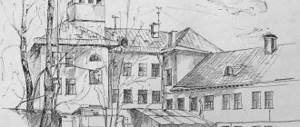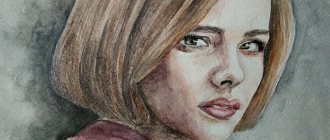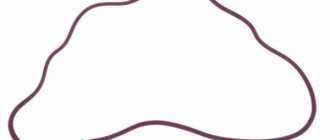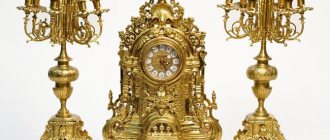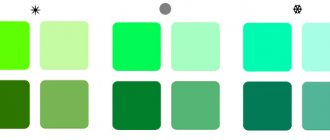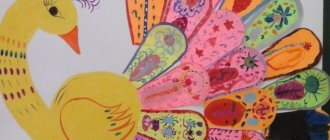Technological map of an art lesson in 4th grade on the topic “Cities of the Russian Land”
CITIES, as people, each has its own character, its own disposition and way of life.
Cities did not arise suddenly. For centuries they grew around the primordial core - a fortress, which has different names. In Novgorod there is a detinets
, in Pskov-
Krom
, but most often -
the Kremlin
.
— Behind the walls of the Kremlin in the old days there was a surprising amount of space. In addition to the main cathedral, churches and bell towers, there was a princely courtyard, towers and chambers of noble people - boyars, warriors and advisers to the prince.
— What main parts of the ancient Russian city can you name? —
Blacksmiths and potters, weavers and tanners, gunners and bakers and many others lived and had their workshops here.
The streets of the city were either narrow, sandwiched by fences, or wide. In bad weather, there was impassable mud on the roadway, and in some places the roads were covered with wooden boardwalks and
paved, hence the word
“pavement.”
played a special role in the life of ancient cities .
Each monastery resembled a fortress.
— Guys, do you know that there was also a convent in our city?
-Now I suggest you work with textbooks.
Velikiy Novgorod
- an ancient Russian city, it stands on the Volkhov River at the confluence of the river into Lake Ilmen. Here the legends about Sadko were born, from here he went on ships with his comrades to trade, travel, see the world! He was looking for happiness, but he became homesick for his homeland and realized that his happiness lived only in his homeland, only at home.
— The main attraction of Novgorod is SOPHIA CATHEDRAL
(p. 61) Now let’s remember:
— How many towers and domes are there on churches? — What shapes do domes come in?
— What color are the domes?
Pskov
Pskov is a trading city and fortress on the Great River not far from Novgorod. The Pskovites had the share of defending their land from the German knights. The buildings are soft and the decorations are not rich. They built it from local stone, but it turned out to be not very durable, it was weathered, so the walls were whitewashed for strength (pp. 62-63).
Vladimir and Suzdal.
The buildings of the Vladimir-Suzdal Land were created for the princes. Therefore, there is a lot of splendor and elegance here.
Dmitrievsky Cathedral. There are sculptural carvings on its walls, as if transparent lace is draped over it. Many animals and birds are depicted here: deer, eagles, lions that look like cats, griffins and other wild creatures.
The most wonderful temple of the Vladimir land is the Church of the Intercession on the Nerl. This is one of the most poetic works of architecture (p.66)
Lesson summary in 4th grade on the topic: “Ancient Russian fortress city” according to the program of B. M. Nemensky
Branch of the State Educational Institution of Higher Education "GSGU" in the city of Yegoryevsk College of Pedagogy and Art
Lesson summary in 4th grade on the topic: “Ancient Russian fortress city” according to the program of B. M. Nemensky
Topic of the 2nd quarter:
"Ancient cities of our land"
Target:
introduce students to the constructive image of the ancient Russian fortified city.
Tasks:
Educational
– talk about the architecture of the city of that time, its structure and features;
Educational
– cultivate love for the native land using works of painting, literature and music;
Developmental
– develop emotional, aesthetic, imaginative perception, creative abilities.
Art materials:
gouache, brushes, paper, scissors, glue.
Visual demonstration materials:
presentation for the lesson, demonstration material, textbook.
Completed by: student of group 42
Specialties: Fine Art and Drawing
Kopylova Anna Alekseevna
| Art materials and activities | Pedagogical methods | Pedagogical tasks |
| 1. Organizational moment. Check readiness for the lesson. The teachers are listening. Introductory and motivational | Methods of motivating educational activities Creating a problem situation, creating entertaining situations, creating a situation of uncertainty, etc. | Creating conditions for students' need to participate in the learning process. Psychologically prepare students for communication in class. |
| 2. Updating mental activity Observing the teacher’s demonstrations, viewing the presentation. Illustrations. | Methods of organizing and implementing educational and cognitive activities Story, heuristic conversation, lecture (informational and problem-solving), text study, demonstration, illustration, cognitive (role-playing and simulation) game, research, discussion, etc. Methods of motivating educational activities Creating a problem situation, creating entertaining situations, creating a situation of uncertainty, etc. | To update the mental operations necessary for students to be ready to work in the lesson: attention, perception, thinking |
| 3. Practical work of students Carry out the product according to the planned plan, analyze, control the correctness of the work, and evaluate their intermediate result. Repeat the rules of perspective. Paper, watercolors, pencils, | Methods for developing new skills Exercises, laboratory work, workshops, games (didactic, business, role-playing, simulation), project method, case method (solving situational problems), brainstorming (solving non-standard problems), etc. Methods of stimulating educational activities Presentation of requirements , encouragement and punishment: verbal (praise, recognition, gratitude, blame), visual (token, conventional sign or symbol), formal assessment (points, mark); creating a situation of success, creating an atmosphere of emotional comfort, etc. | 1. Prepare students to complete a practical task. 2.Organizes the work of students, instructs, monitors the completion of the task. |
| 4. Lesson summary Summarize their learning activities and evaluate their results. | Methods for summarizing and systematizing what has been learned Methods for monitoring learning outcomes • Oral: survey (individual, frontal, selective, cross-sectional), conversation, etc. | Assess the results of the educational activities of the class and individual students. |
| During the classes | Timing |
| 1. Checking the readiness of the workplace. Preparatory work to create a positive attitude for the lesson. Good afternoon dear friends! I'm glad to meet you again. Let's take a trip to distant centuries, To ancient Russian fortress-cities. Now we’ll talk a little, I’ll tell you about what the cities and fortresses were like, and then we’ll get to work. We listen carefully to the teacher and look at the screen. | 2-3 minutes |
| 2. Studying new material. Updating knowledge - a conversation about the fortified city. U: The depiction of architectural structures is widespread in artistic creativity. Many historical events are depicted against the backdrop of architectural structures. Architectural buildings are often found in landscape paintings. Since ancient times, Russian people have settled on the forest-rich shores of lakes and rivers. The forest thickets gave him shelter and shelter, food and material for buildings. Huts and barns were cut from wood, churches and cathedrals were erected, cities, gorodtsy (small towns), and kremlin-fortresses were built. The word “city” comes from “to fence off”, “to fence off” with a fortress wall - to fortress. On high hills, reflected in rivers and lakes, white-stone cities with domed temples and ringing bells grew. Chronicles say that already in the 9th century, at the dawn of Russian statehood, fortified cities were built: Novgorod, Rostov the Great, Kiev, etc. The heroic image of a fortress-guard, a fence, took root in architecture and became one of the most characteristic and striking features of ancient architecture . It is not without reason that the silhouettes of many wooden churches and belfries remind us of the epic heroes standing as outposts on the Russian borders. Look at the image of the fortress-monastery. What architectural objects can be distinguished in the ancient Russian fortified city? The teacher demonstrates a drawing-plan “Ancient monastery-fortress” and a poster “Individual architectural objects of the monastery-fortress.” D: In the architecture of these ancient Russian cities, the fortress wall, the central entrance, the single-domed temple with side chapels, the corner tower of the temple, and the five-domed temple are clearly highlighted. The teacher demonstrates reproductions of paintings by artists depicting a fortified city. W: What feelings do you experience when you see these works? D: A feeling of pride for our native land, for the Russian people. We see impregnable ancient Russian cities, reminding us of the great history of our country, preserving the memory of the heroic past of our ancestors. T: What is architecture? D: Architecture is a type of fine art, architecture, the art of designing and building. U: There are three main types of architecture: 1) volumetric structures - religious, public, industrial, residential and other buildings; 2) landscape architecture - gazebos, bridges, fountains and stairs for squares, boulevards, parks, “small architecture”; 3) urban planning - the creation of new cities and the reconstruction of old ones. Complexes of buildings and open spaces make up architectural ensembles. The architect cares about the beauty, practical usefulness and strength of the structures created, that is, aesthetic, constructive and functional qualities in architecture are interrelated. The architecture reflects the artistic style of the era. World-famous architectural structures and ensembles are remembered as symbols of countries and cities (pyramids in Egypt, the Acropolis in Athens, the Colosseum in Rome, the Eiffel Tower in Paris, the Kremlin and Red Square in Moscow). U: What is special about the architecture of the ancient Russian fortress city? D: In the architecture of the fortified city, the beauty and wisdom of the structure are harmoniously connected. Each object of the Kremlin’s architecture, like an epic hero, stands in defense of the city and is an aesthetic addition to the external image of the fortress city. U: The word “Kremlin” came into use under Prince Ivan Kalita in the 14th century, when the Moscow fortress on Borovitsky Hill was surrounded by powerful archers, the predecessors of the current Kremlin towers. Scientists explain the word “Kremlin” in different ways. Some believe that it is related to the word “flint,” that is, strong. There are reasons for this, since the Kremlin in some sources was called Kremnik. Others believe that this word comes from the Old Russian “krem” - strong timber. The Kremlin tree, grown in the open space, on the edge of the forest, is especially strong. How did you choose a place to build an ancient Russian fortified city? Where was the Kremlin usually built? Who and where chose the place to build the Moscow Kremlin? D: Usually fortified cities were built on a spit at the confluence of rivers. Yuri Dolgoruky chose a place for the outpost-fortress: a hill convenient for defense at the confluence of the narrow forest river Neglinnaya with the deep, clean Moscow River. And so a fortress appeared in the forest, which was supposed to guard the far outskirts of the Suzdal land. The favorable geographical position strengthened and distinguished the fortress, which gradually became the city of Moscow. T: What building materials were used for the construction? D: Strong wood, stone, brick. T: Look at this schematic drawing. The Astrakhan Kremlin is located on the western side of the Hare Hill in the form of a narrow right-angled triangle. Towers were built on its corners and sides, interconnected by fortress walls. Each side of this triangle is fortified by three towers, of which each corner belonged to two sides (show) . The towers were drive-through and blind. The travel towers were taller and had thick walls. Their passages were closed by massive wooden gates bound with iron sheets. The towers were topped with battlements, on which wooden tents with watchtowers were built. On the Prechistinskaya Tower (Bell Tower) there was a guard bell hanging in the guard tower. What does the word watchdog ? D: There were watchmen and guards there. U: The most powerful is the Crimean Tower, located on the western side. From here, from the Crimea, danger to the city most often came. The thickness of its walls reaches 3.5 meters. Neither time nor war could destroy the tower; it is still preserved in its original form. The artillery tower was located next to the artillery yard. The entrance to the Kremlin was through the central entrance - the Bell Tower. This is the main passage tower of the Kremlin. It has three passages. The height of this four-tier building is 80 meters. The Kremlin buildings were not only beautiful, but also reliable. During a siege, one could hide from the enemy in any of them. And the walls, reinforced with towers, could withstand any assault. Reading an excerpt from N. Konchalovskaya’s poem “How Razin takes Astrakhan from the Tsar’s governors.” What kind of smoke floats over the waters, Resinous, heavy smoke? Sometimes it spreads out in streaks, sometimes it stands like a gray column. And the one that came to Astrakhan crackles, blazing in the flames, - With a golden eagle on the banner, the warship "Eagle" ... And at that time, people's revenge entered the city of Astrakhan, Although they prepared in advance Garrisons on the rampart - Cannonballs, stones for throwing And boiling resin... U: The builder invites you to share the impressions you got from what you saw and heard. Physical education minute 1. Reading a poem. A wonderful city, an ancient city, You have included in your ends And towns, and villages, And chambers, and palaces! Belted with a ribbon of arable land, you are all colorful in the gardens: How many temples, how many towers On your seven hills!.. Who will raise the Tsar Bell? Who will turn the Tsar Cannon? Who, the proud man, won’t take off his hat at the gates of the saints in the Kremlin?! F. N. Glinka | 10-15 minutes |
| 3. Creative practical activities of students. Make a sketch of your future fortress, think about where the towers, buildings, gates, watchtowers will be located, what material the future fortress will be made of, etc. Complete the elements of individual buildings of the ancient Russian fortified city. Stages of work: Stage I – determination of the proportions of the fortress tower on paper; Stage II – construction of the walls of the fortress tower; Stage III – roof construction; Stage IV – decoration of the fortress tower structure. The teacher explains the work of constructing a roof: option A - transforming roofs bent from strips of paper by cutting and folding the edge in the opposite direction; option B - a combination of various designs from strips of paper to create a plastic image (design from strips of paper by bending and twisting strips of paper). Then the students do the work independently. | 20 minutes |
| 4. Lesson summary Exhibition and analysis of works. Finished works are displayed on desks. The teacher, together with the students, discusses the result, speaks positively about the children’s work and notes the neatness, aesthetics, and creative manifestation of the children’s individuality. Questions for the student individually assessing his work (the beginning of the formation of a self-assessment algorithm): - What did you need to do? – Did you manage to do what you planned? – Did you cope with the work or are there any shortcomings? – Did you do everything yourself or with someone’s help? – How would you rate your work? – Now we, together with ... (student’s name), were learning to evaluate our work. – Who wants to try to evaluate their work? 2. Generalization. – What did we learn in class today? – What material can the fortress be made of? – What techniques for working with b were useful to you in the lesson? – What did you do best? – What difficulties did you have? Reflection – How would you rate your mood after the lesson? Evaluate it with emotion. Has your mood changed since the beginning of the lesson or not? Share what contributed to your mood change. Today in class I learned... I understood... it was interesting... it was difficult... - What word does the word “city” come from? — What mood are you experiencing now? Cleaning the workplace. | 3 minutes |
